Manchester United are, at the time of writing, at the top of the Premier League table, having played exactly half of their games for this season. To say that this is an unexpected position would be an understatement – most observers, as well as the Manchester United manager, Ole Gunnar Solskjaer, probably expected the side to challenge once again for a top four spot, but the peculiarities and weirdness of this season have meant that they have to be considered as bonafide title contenders. This has been an impressive turnaround from the start of the season, when a few shock results, including a 6-1 thrashing at home by Tottenham Hotspur and former United manager Jose Mourinho had seemed to have put Solskjaer’s job on the line, coupled with elimination from the Champions League at the group stage. However, the Red Devils have put together a stunning run of form since then, having not lost in the league since November, and unbeaten away from home now for 17 matches, going back to last season.
That is not to say that United are cruising along – there are still quite a few issues within the squad and team, but that is true of all of the potential title contenders, which has helped make this one of the most open title races in years. From a United standpoint, one persistent issue, going back to last season, is their performance at set-pieces. Despite having the likes of Harry Maguire, Eric Bailly, Nemanja Matic and Scott McTominay in their ranks, the Manchester club have often struggled to defend set-pieces, especially corners. While they have not allowed too many goals from such situations directly this season, there have still been quite a few moments of chaotic defending which could have been taken advantage of by opponents. This will be an area for Solskjaer to look at and work on, since set-pieces can easily make the difference in tight games, and could therefore be a big factor in the title race later on this season.
The Setup
United, like most teams in the league, go with a mix of man-to-man and zonal marking when defending corners and free-kicks. They usually place either the striker or the attacking midfielder at the near post, with three players at the edge of the six-yard box to defend those zones, and then four to five players picking up opponents, usually staggering in a line between the six-yard box and the edge of the penalty area, with their starting position being around the penalty spot.
One of the problems with this is the player stationed at the near post. It has usually been either Bruno Fernandes or Anthony Martial, with Mason Greenwood also placed there when he plays. None of these players are great in the air, and while the logic may be to get them away from central areas where they would be unlikely to win aerial duels, it still means that United often allow corners to come through the near post area as a result. However, we have seen this side of things improve in recent weeks when Edinson Cavani has been placed there instead. The Uruguayan is good in the air, and has noticeably improved United’s defensive robustness at the near post while defending set-pieces.
It is also instructional to look at the kind of areas where opponents have been delivering their set-pieces into, and the locations of their shots from such situations.
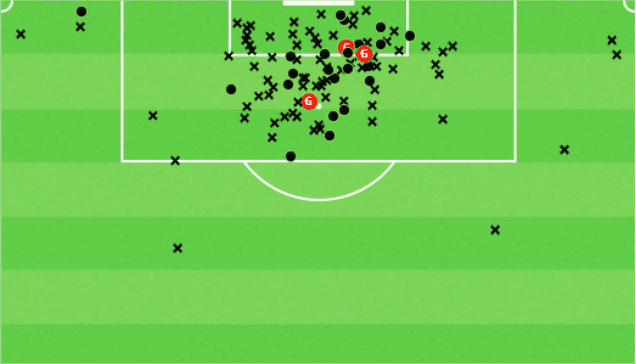
The above image, taken from Instat, shows the location of every set-piece delivery that United have faced this season. We can already see that a large number of these have ended up in United’s six-yard box, which is an extremely dangerous area to concede such deliveries to. The next image will show only the shots and goals from such situations that United have conceded –
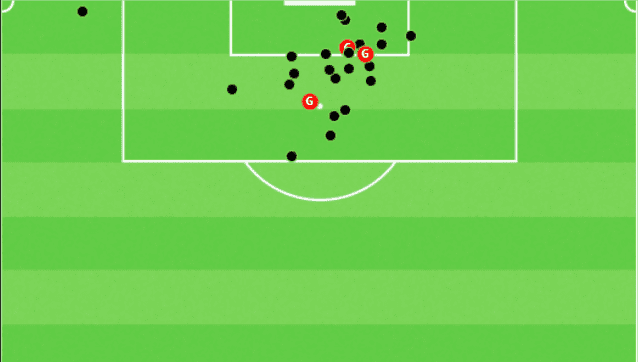
At once, we can see that the Red Devils have conceded quite a few shots from inside the six-yard box, with quite a few from just outside this area as well. Two goals have come from this area as well, which shows how United have generally struggled to protect the six-yard box, and have allowed their opponents chances from dangerous positions following set-pieces as a result.
The Issues
We will now look at some examples from games to gauge what the issues are for United while defending set-pieces.
Spacing/staggering and marking
United have often been caught out from set-pieces this season due to issues with the way in which their defence is set up. Too often, we have seen problems in the way the blockers and man-markers are positioned, while there have also been some baffling decisions made in terms of who marks whom in the box.
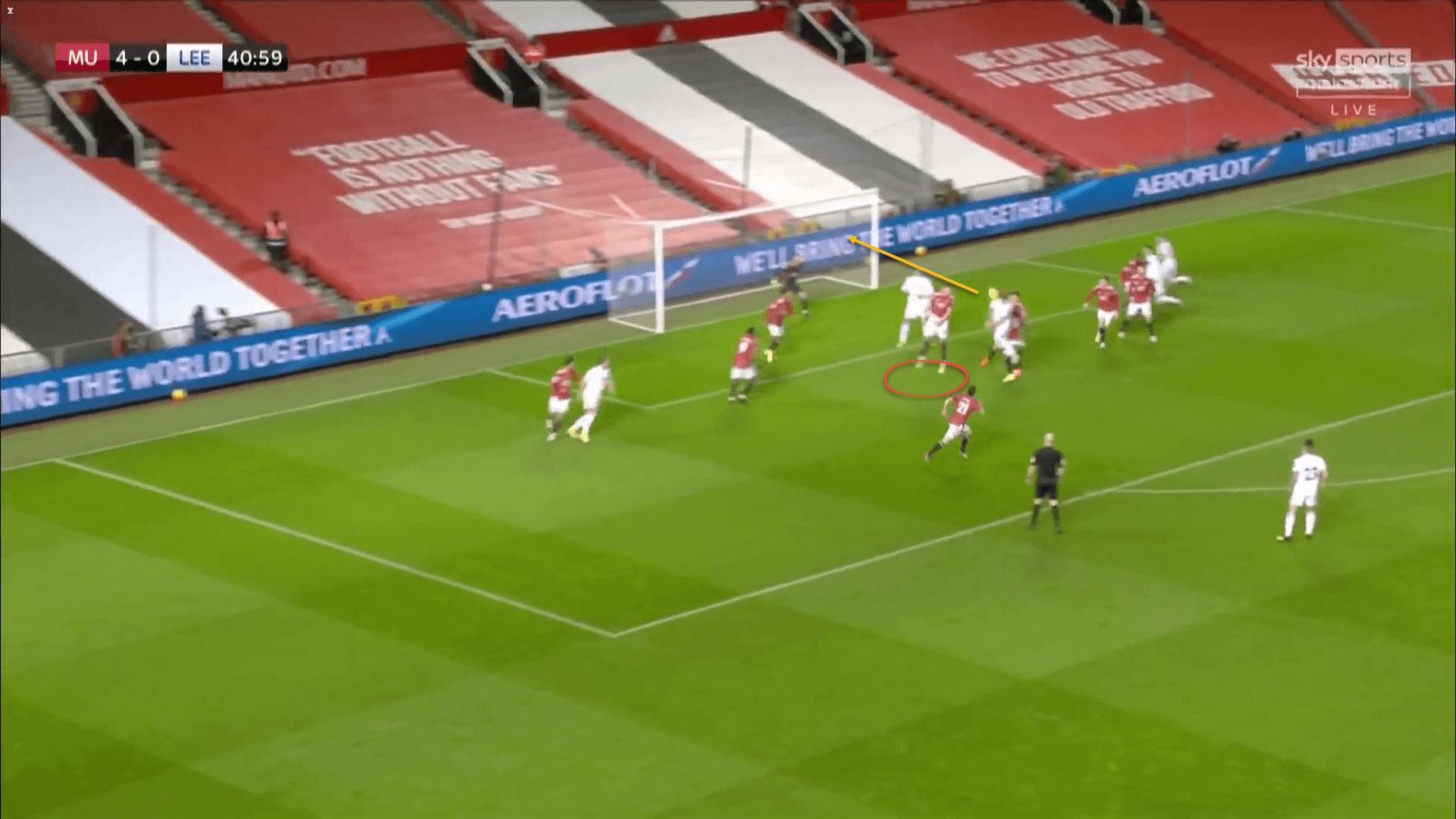
This was the first goal that Leeds scored at Old Trafford, through their captain, Liam Cooper. Scott McTominay (highlighted in red) seems to be the guilty party at first, but upon deeper digging, we see that this is not the case.
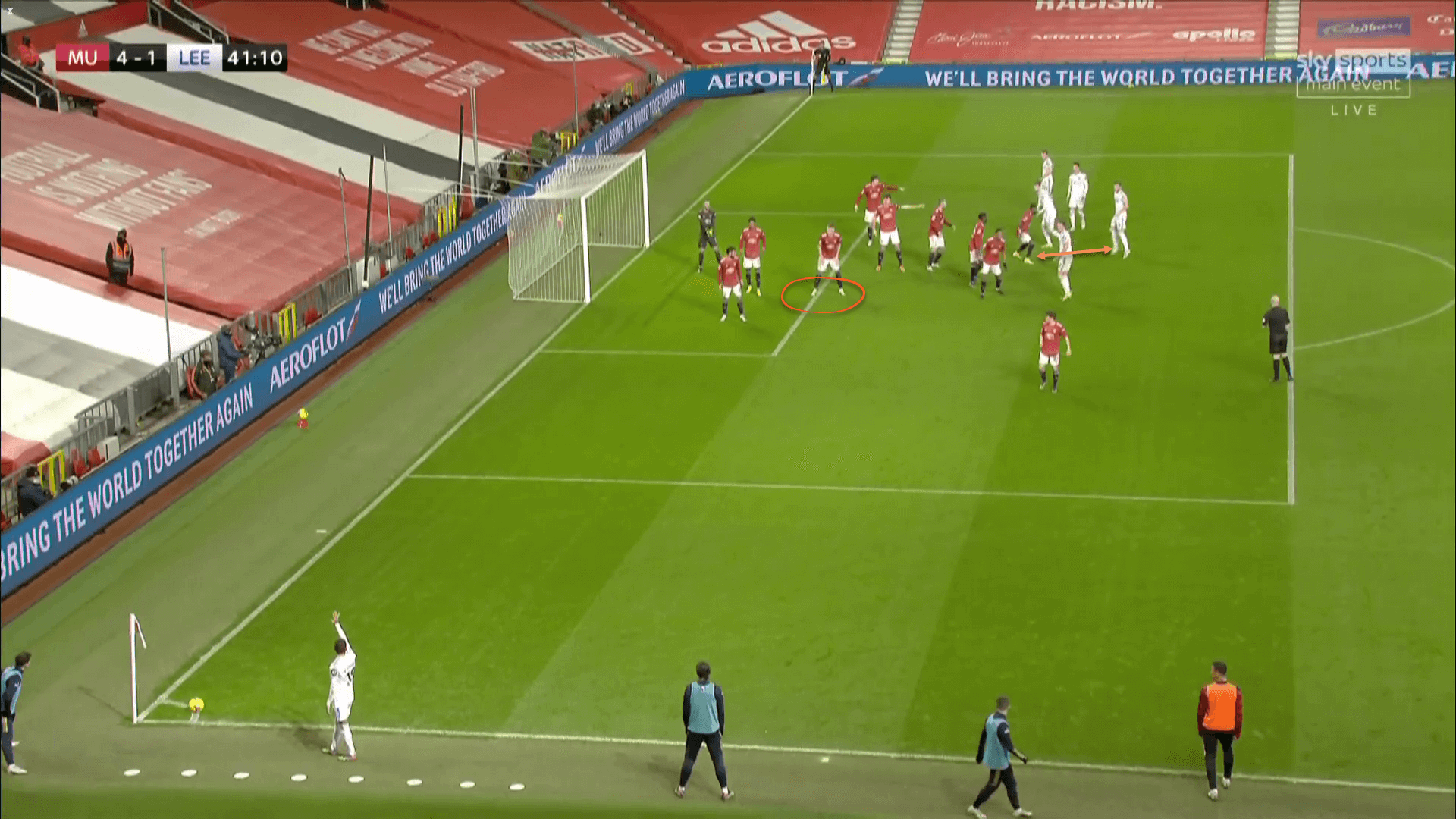
We see United’s setup when the corner is about to be taken by Raphinha. McTominay is one of the zonal markers on the edge of United’s area, while it is actually 5’7″ Fred marking 6’2″ Cooper.
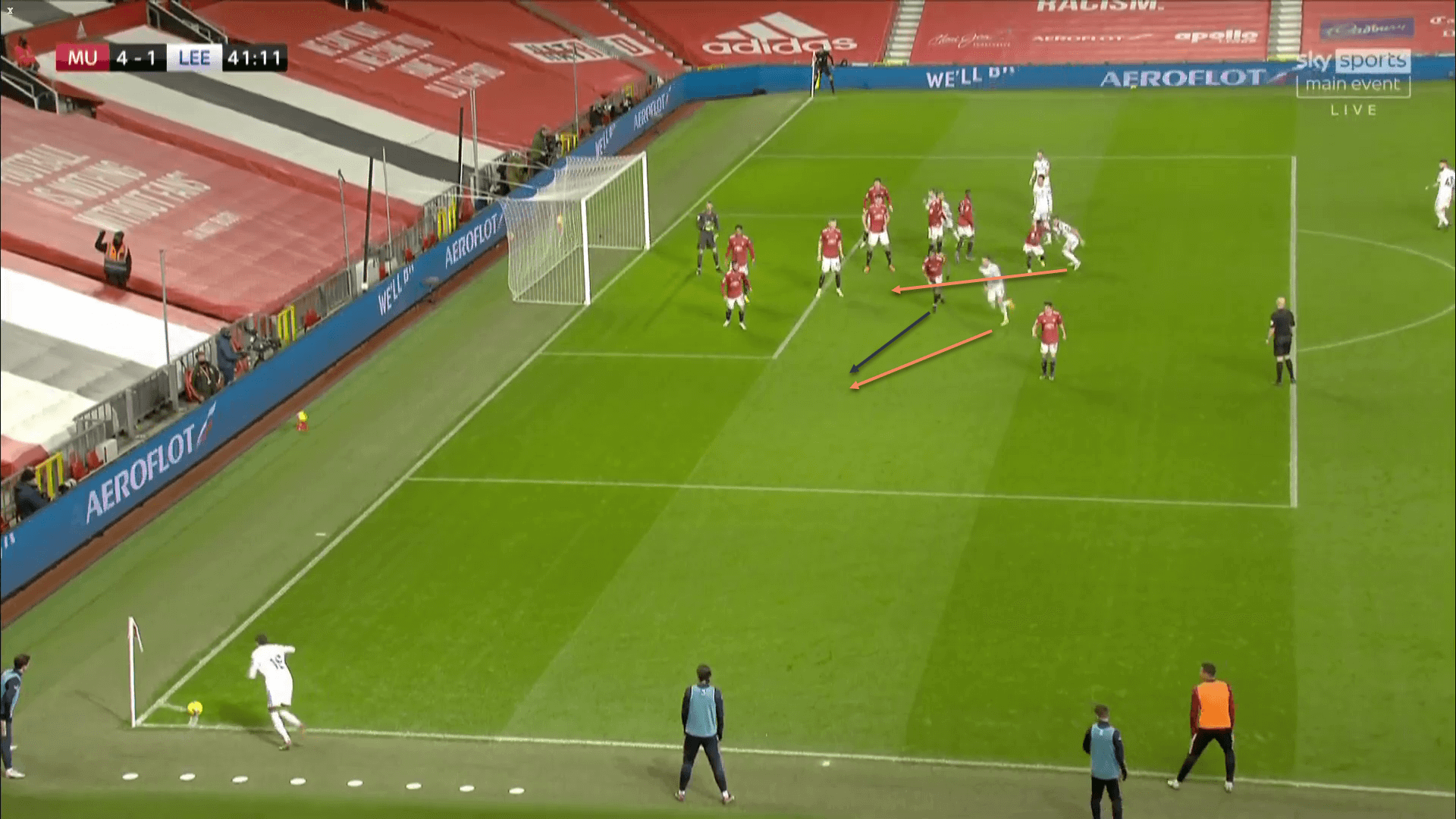
As Raphinha begins his run-up, Anthony Martial is drawn away by Luke Ayling, which then creates the space for Cooper to run into from where he heads the ball into the far corner.
Yes, there is a case here for McTominay perhaps being a touch more proactive and getting out to fill the space once he sees Martial being drawn away. However, that is the issue with zonal marking, you cannot afford to leave your zone free for runners. Additionally, the very fact that Fred is marking Cooper has to be the biggest reason for this concession – and is therefore down to the coaching staff and their instructions.
Another goal conceded, this time against Sheffield United, showed issues with United’s marking and spacing, although this was not as egregious as the Leeds example.
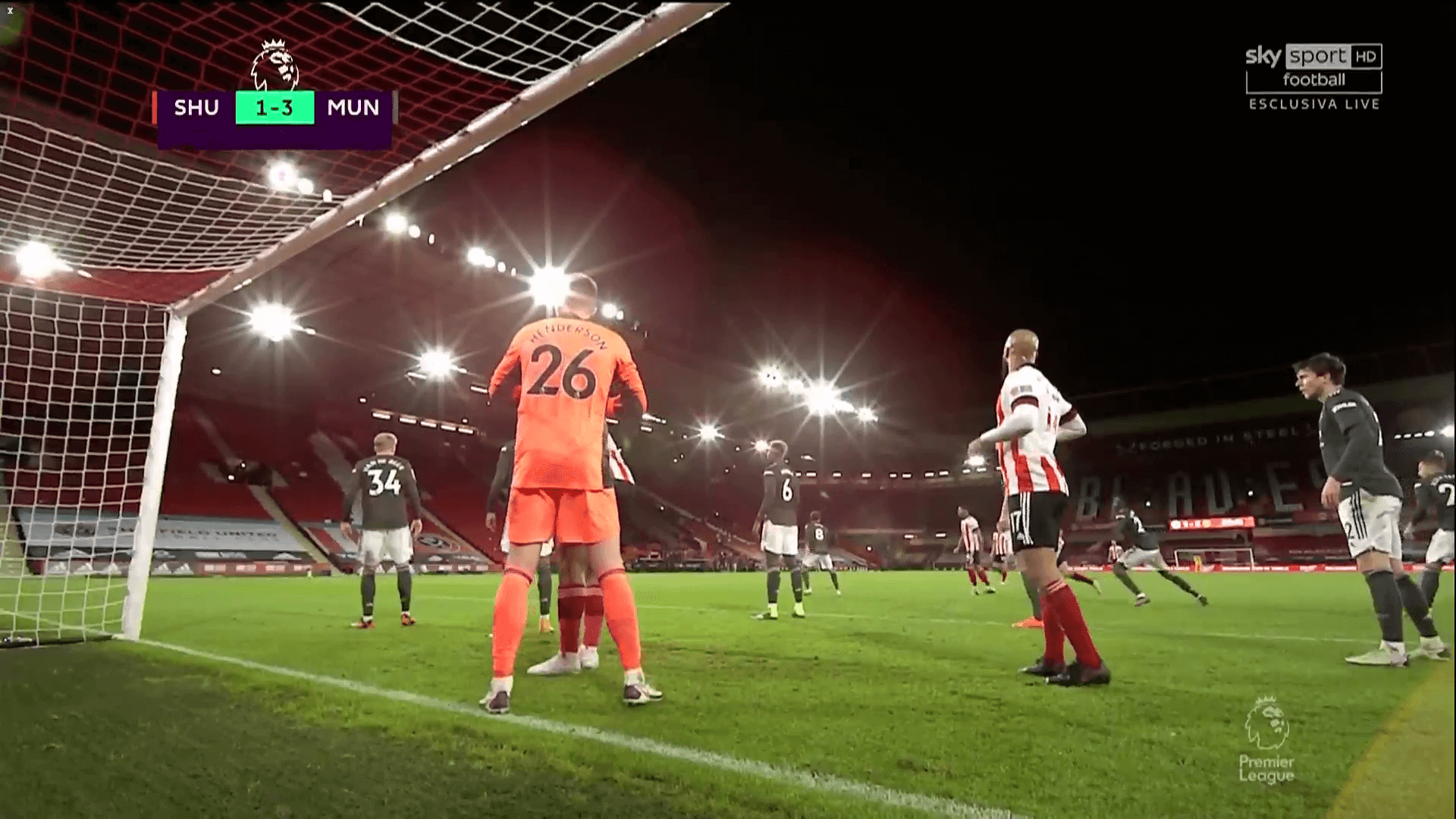
As the corner is about to be taken, we see that David McGoldrick has managed to find a yard of space in the six-yard box, ahead of Victor Lindelöf.
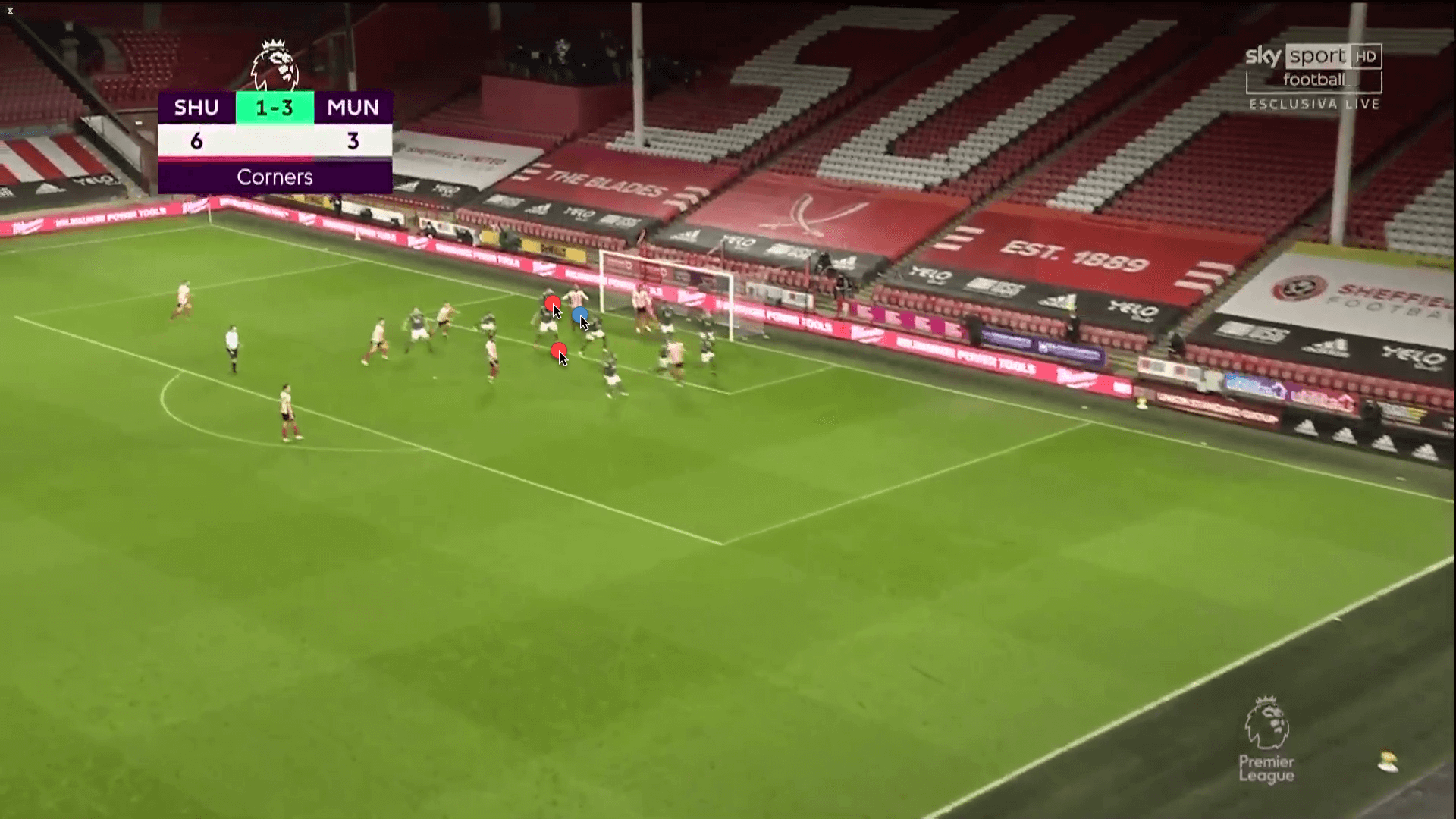
As the ball is in the air, McGoldrick has been able to find space in the box despite the presence of Maguire and Lindelöf, United’s centre-backs, in the six-yard area.
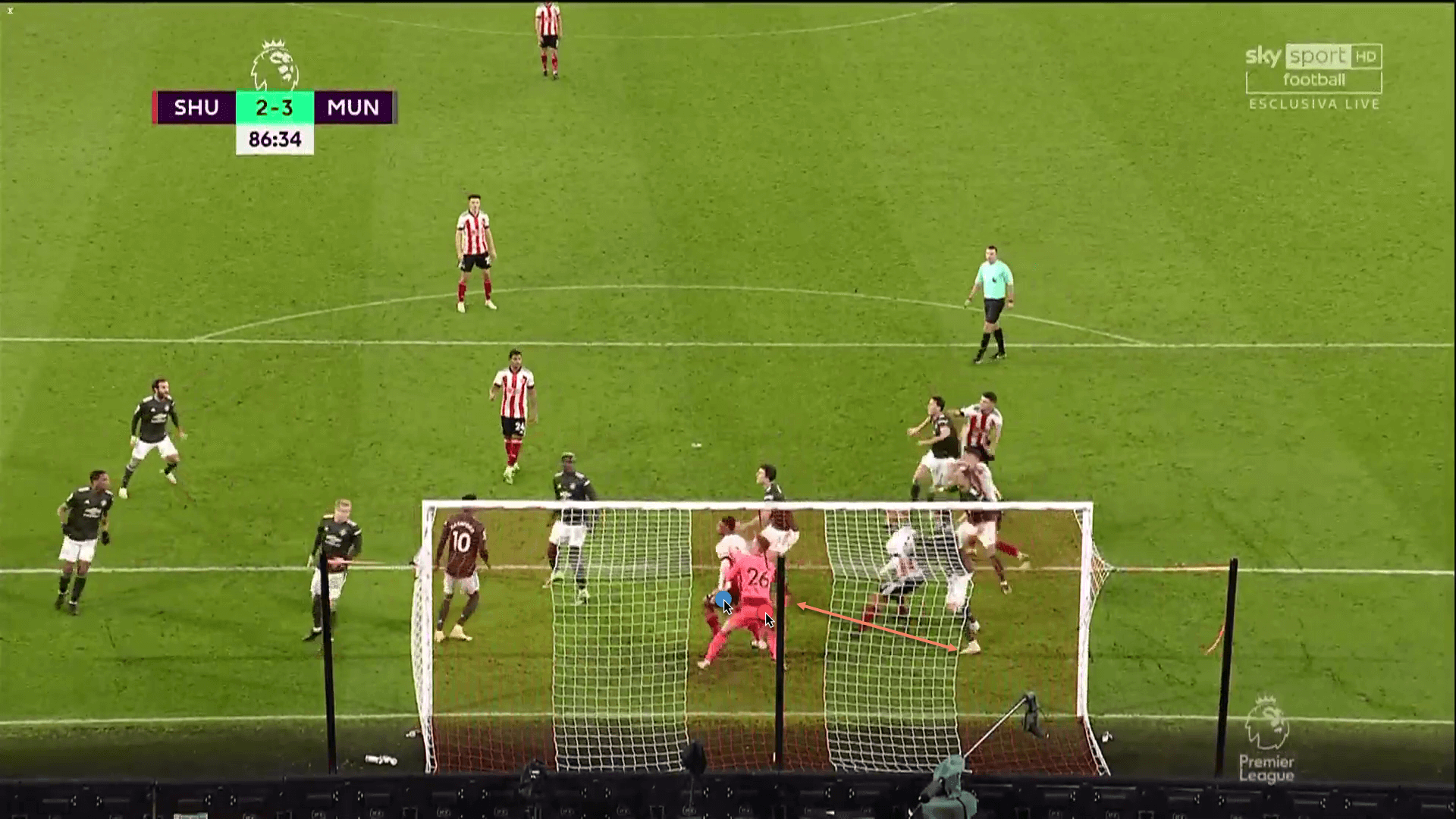
Seen from behind the goal, we begin to see some of the issues. Note, first of all, how Lys Mousset has pinned Dean Henderson, preventing him from coming out to claim the ball. This has been an issue with both David de Gea and Henderson, even though the Spaniard has improved tremendously in this regard since he first arrived at Old Trafford. Both keepers have a tendency to get caught on their line and therefore not be able to come out and punch or catch the ball, although there is a case here for one of United’s players providing better protection to the keeper.
We can also see that McGoldrick has very cleverly positioned himself between Maguire and Lindelöf, thus occupying both of United’s centre-backs in a position where he is already the favourite to win the ball.
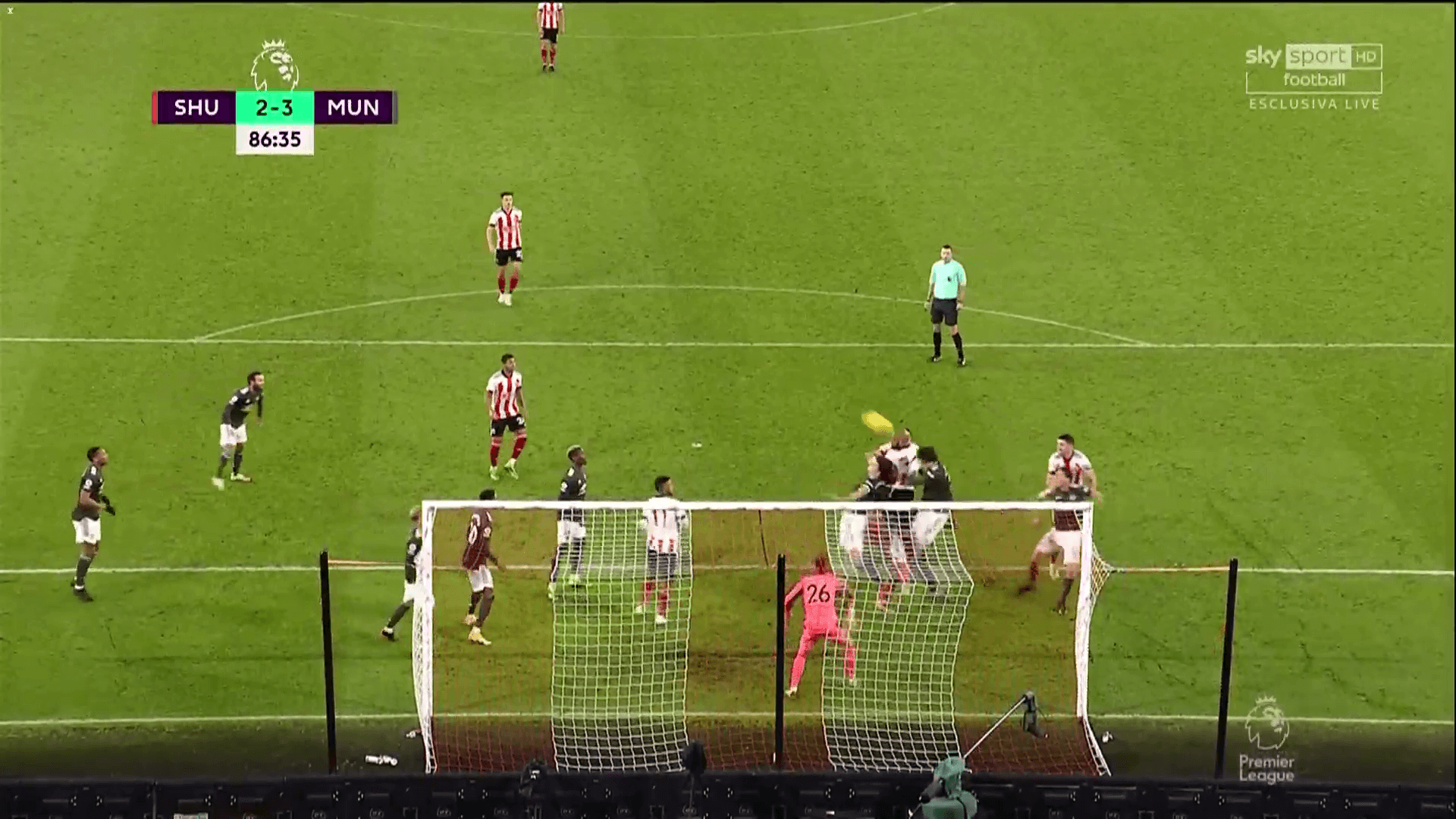
That is exactly what happens, as McGoldrick is able to hold both of them off and guide a header into the net.
This has been a recurring issue at times, especially with Maguire being caught under the ball on a couple of occasions. United’s captain is the strongest at the club in terms of proficiency in aerial duels, but he does have a tendency to be caught napping, while I would argue that he may be better served with a change in role during defensive set-pieces. Logic dictates in a zonal marking system with three men guarding the six-yard area, at least two of them should be your strongest headers and should be positioned at the far post and in the centre of the box. Maguire is usually the man in the centre, which leads to him being the one heading away a huge number of crosses, but also being culpable for any small slip or loss of concentration. There may be a case to switch him to the far post on occasion, especially when Bailly plays, as this will allow United to have two strong headers in that zone.
Individual errors
Another recurring theme for United during Solskjaer’s tenure has been the regular occurence of mistakes at the back which lead to goals being conceded. All of United’s defenders have shown a propensity to switch off at key moments, whether this is during open play or at set-pieces, and this has already cost United dearly domestically as well as in Europe.
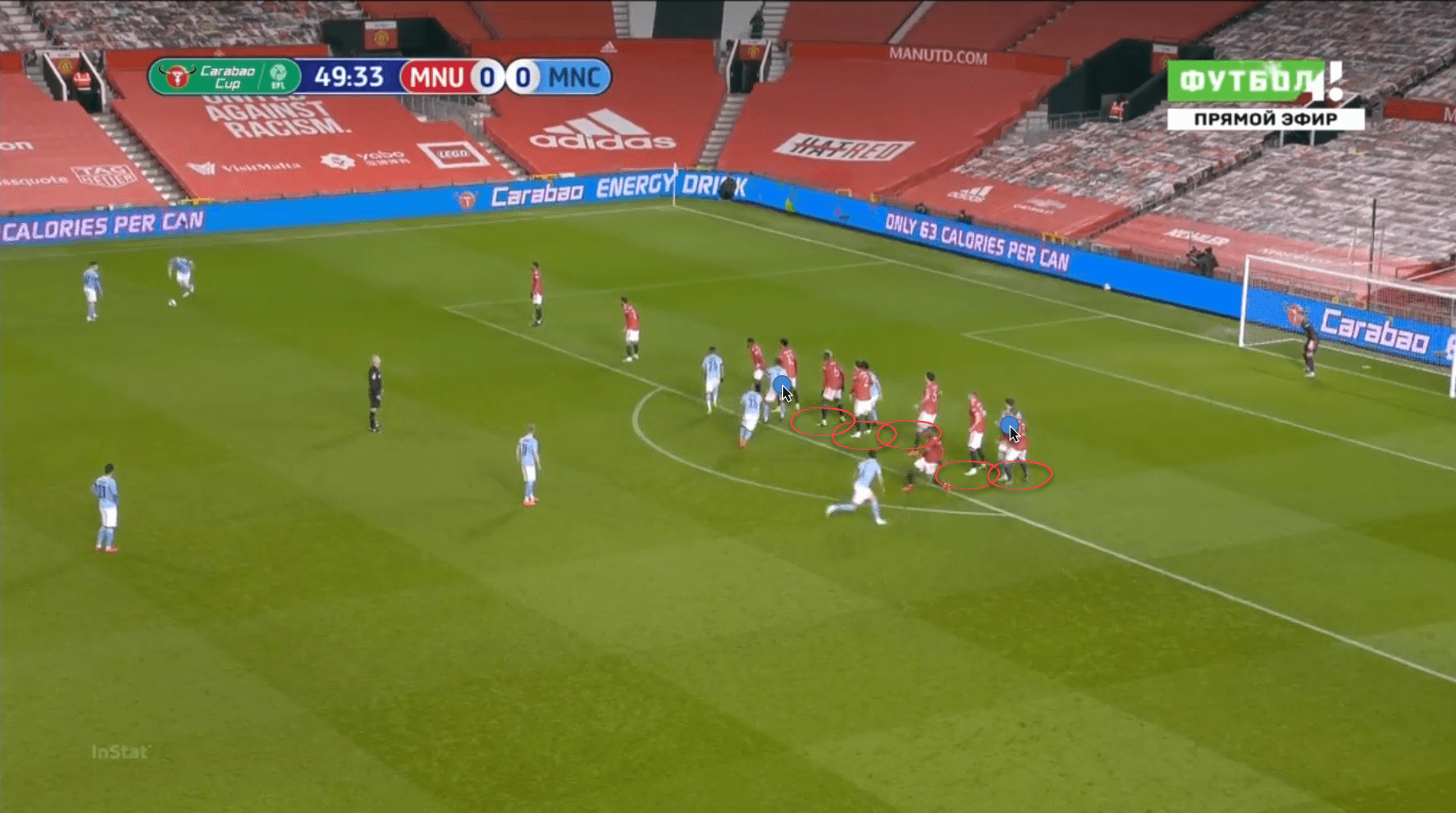
This goal conceded against Manchester City in the Carabao Cup semi-final is a prime example of United’s defenders losing focus. Note that John Stones is towards the back of the United line, with Luke Shaw and Scott McTominay in close attendance, while Raheem Sterling is at the front, with Paul Pogba and Lindelöf close to him. United actually have numerical superiority in the box at this time, but still manage to concede.
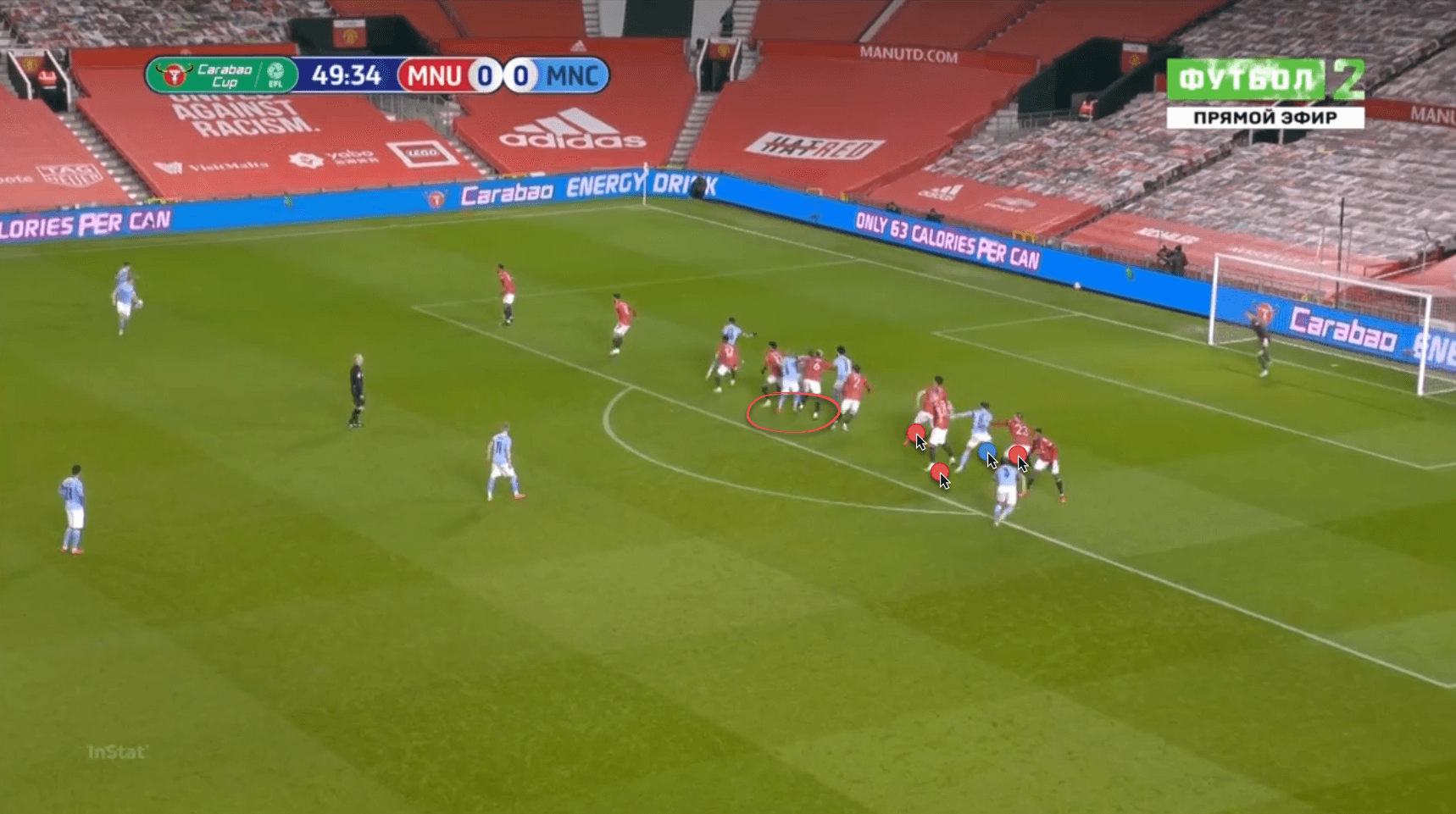
As the free-kick is taken, Pogba has managed to block off Fernandinho’s run from deep, but Sterling has got ahead of him. At the back of the queue, Stones has managed to get between Shaw and McTominay and now has clear space to run into and attack the ball, with Maguire ball-watching and not aware of what is going on behind him.
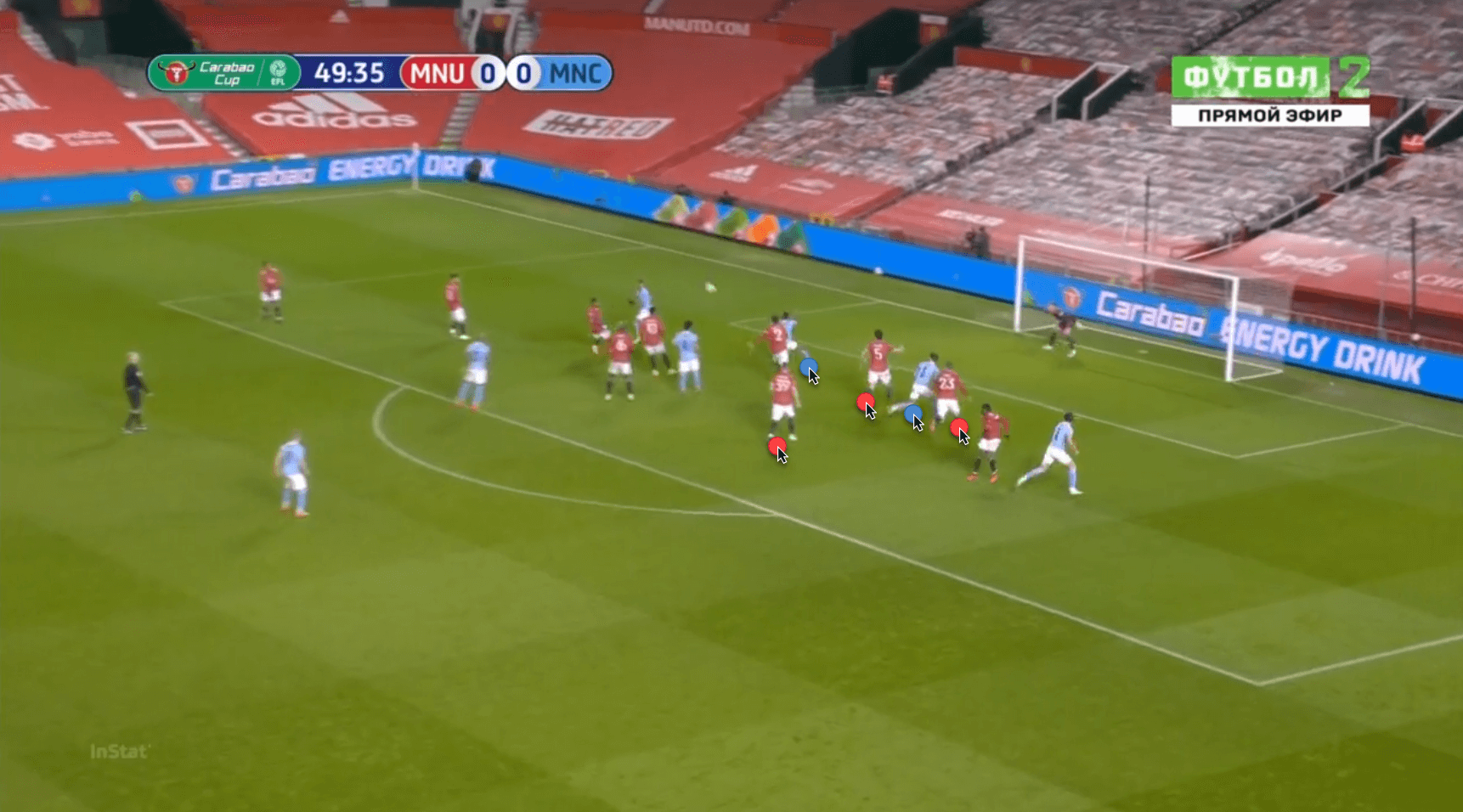
The ball is just ahead of Sterling, who has stolen ahead of Lindelöf, but Stones will be on hand to turn it in, with Maguire letting the ball run across him instead of clearing it.
It is not just the United captain who has been guilty of sloppiness and a lack of awareness during, or indeed after, defensive set-pieces this season.
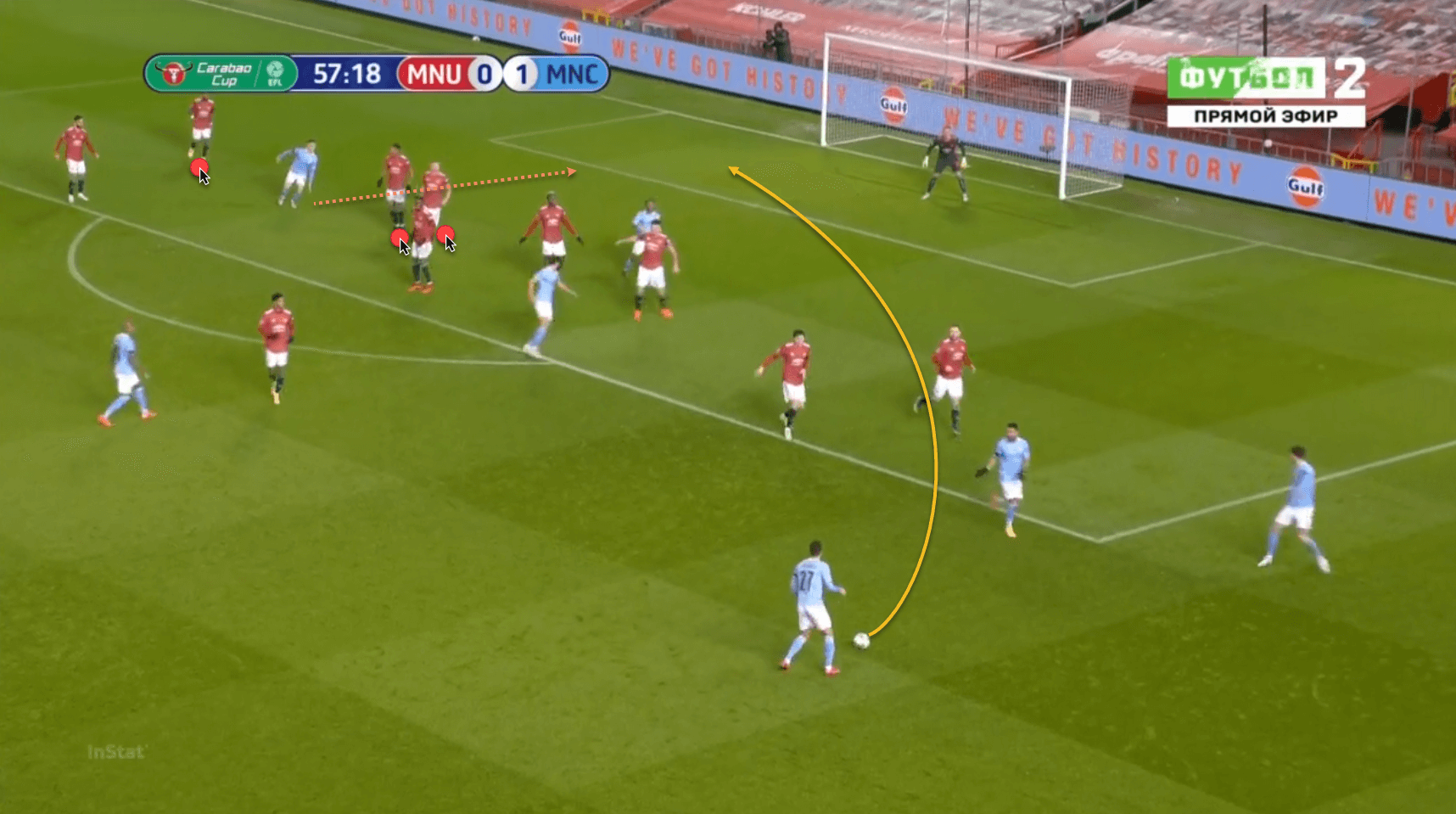
Another example from this game, after a corner was cleared and City picked up the second ball outside the United area. As João Cancelo shapes to cross, Phil Foden is switched on and begins to make a run towards the far post. Fred, Martial and McTominay are all stationary. Despite Foden being in front of Fred, neither does he make a covering run himself, nor does he shout to Martial or McTominay to be aware of their surroundings.
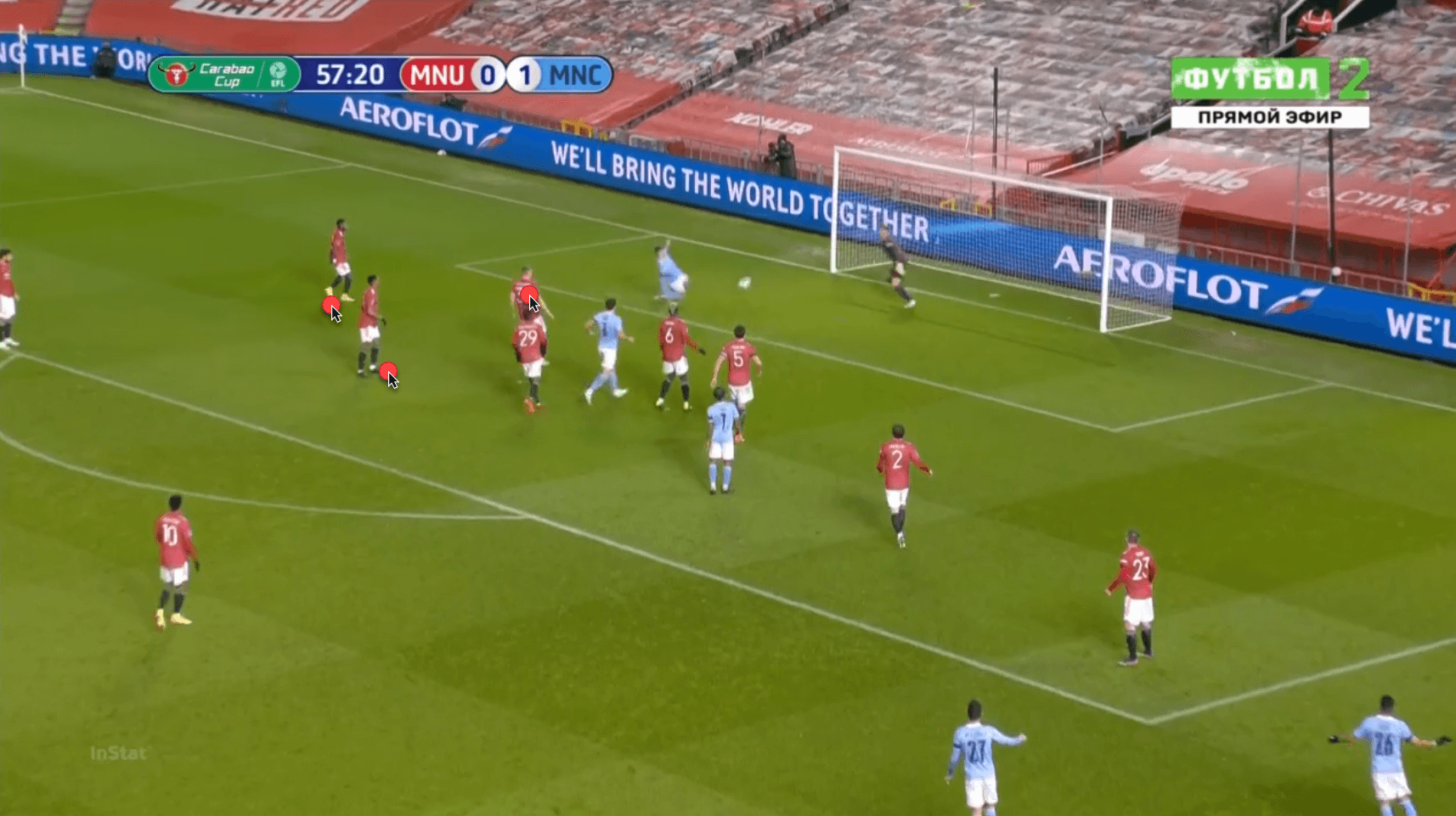
Foden is inches away from connecting at the back post, with the nearest United player five yards or so away.
There have also been examples of simple movements and runs catching United players out. We spoke about Cavani’s inclusion in the XI helping the team to defend the front post area better, but he too has been at fault on a couple of occasions.
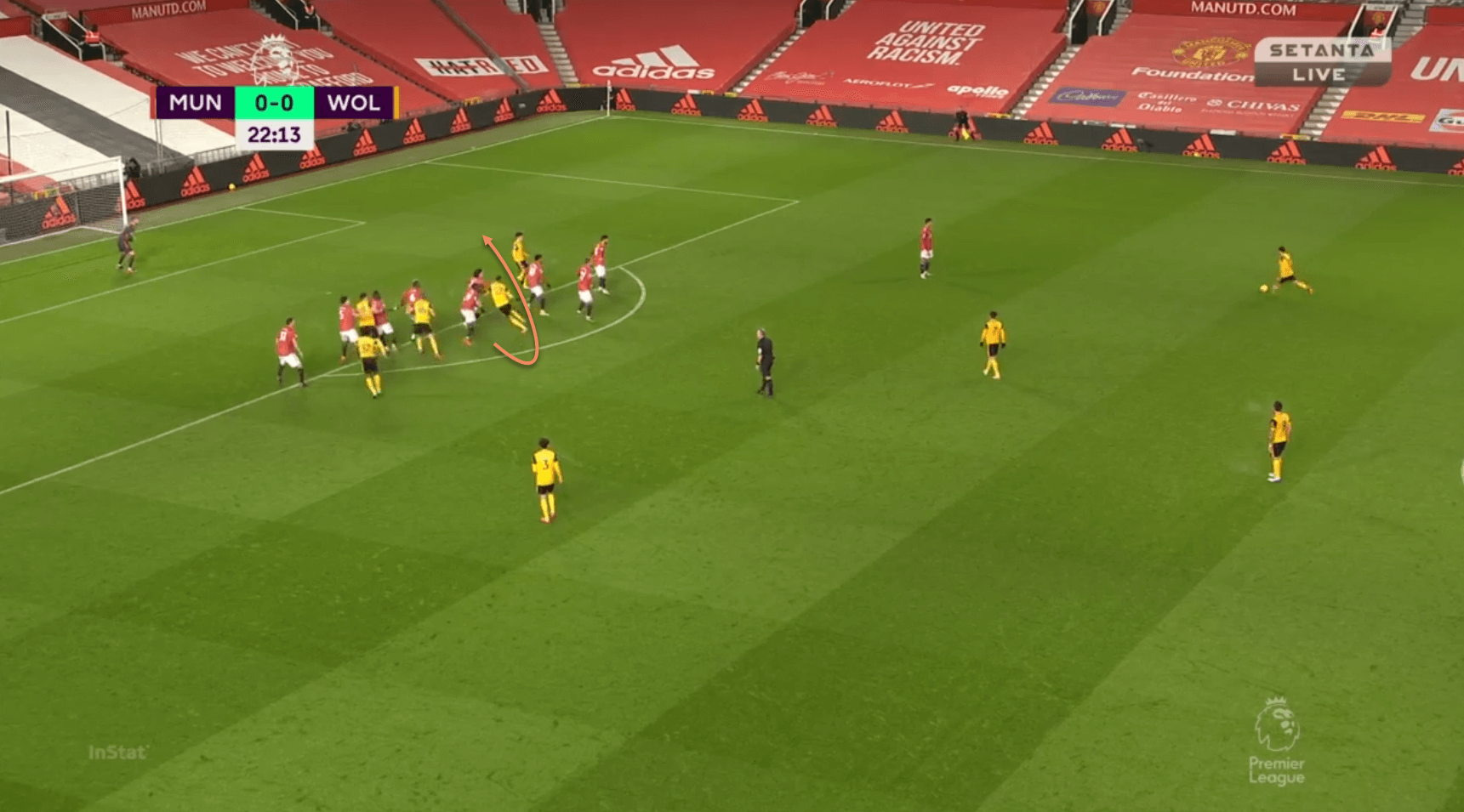
As João Moutinho runs up to take this free-kick, Romain Saïss makes a curved out-and-then-in run towards the near post, with Cavani being the nearest United player.
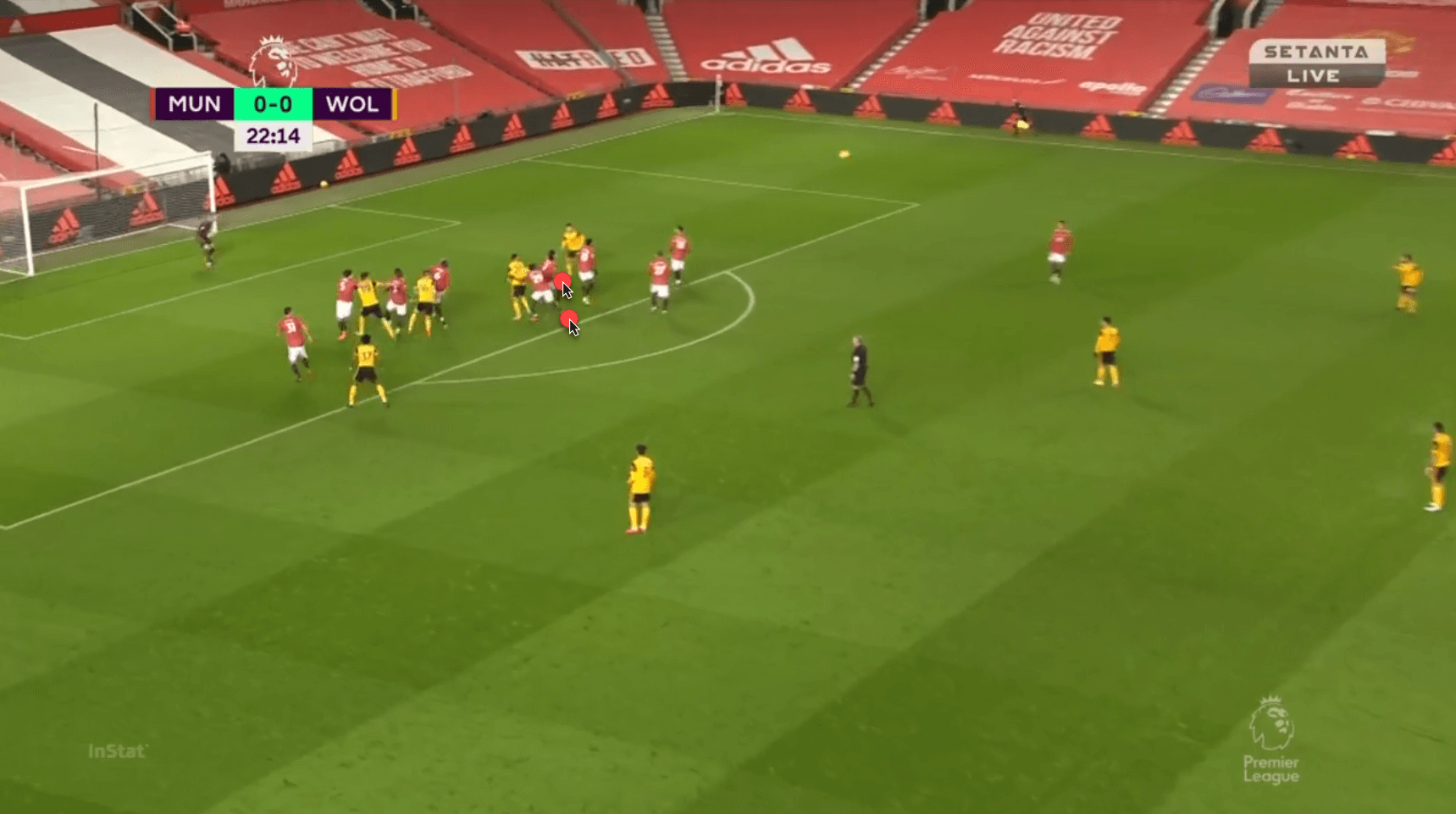
With the ball in the air, the Moroccan international has managed to get away from both Cavani and Aaron Wan-Bissaka, and manages to get a looping header on target which De Gea has to help over the bar.
This is the sort of run that Cavani himself would have made hundreds of times from similar situations at the other end, but yet he is caught out by this movement.
Another example from the same game, where once again Cavani is caught out –
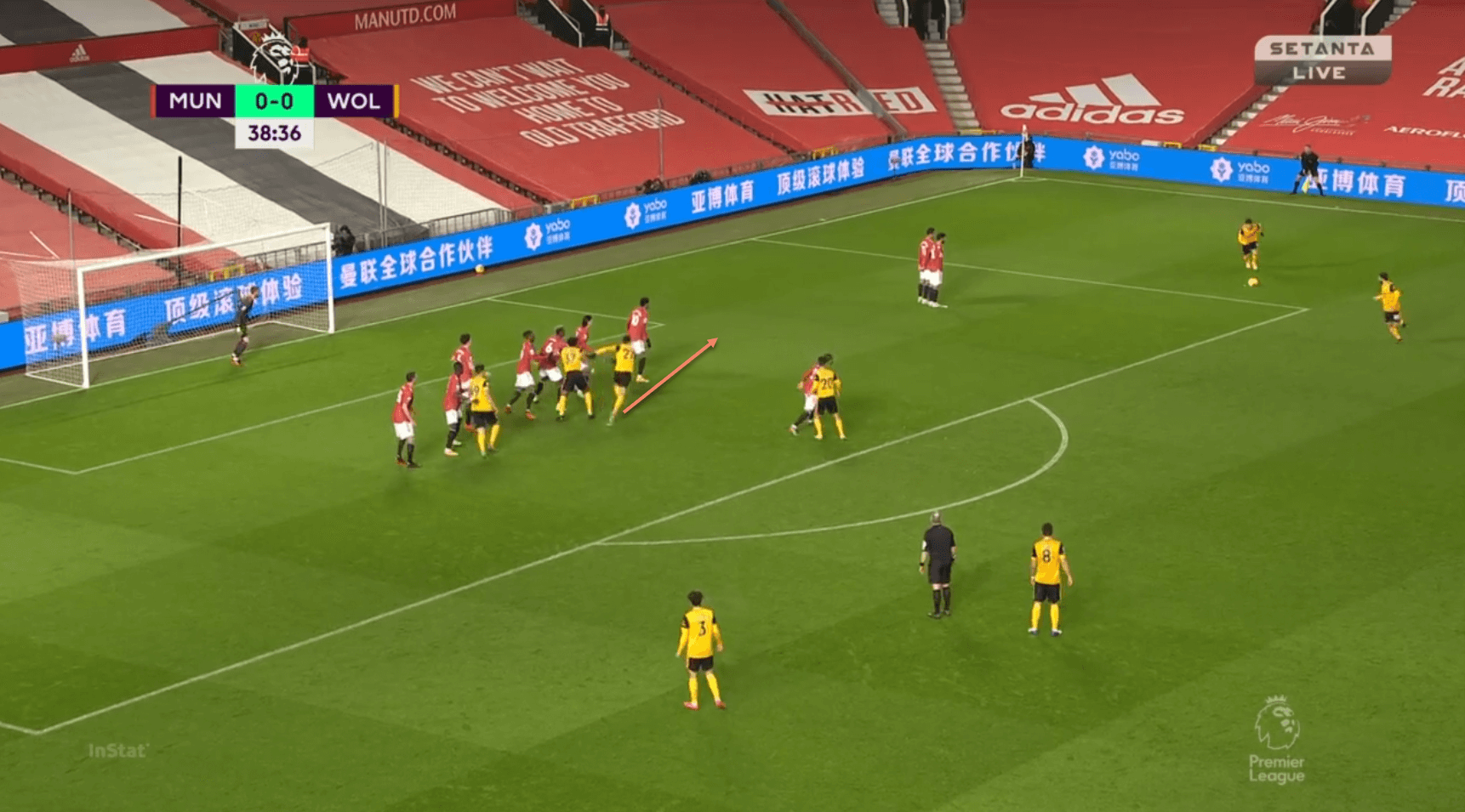
Once again, it is Saïss who gets the better of the Uruguayan. As Pedro Neto runs up to deliver the free-kick, Saïss makes a run towards the near post, which Cavani fails to follow. It can be argued that he was distracted by the presence of Adama Traoré, but Wan-Bissaka and Pogba are on hand to deal with the Spaniard. In fact, United outnumber Wolves 7-3 in this area, and yet it is a Wolves player who gets the first contact on the ball.
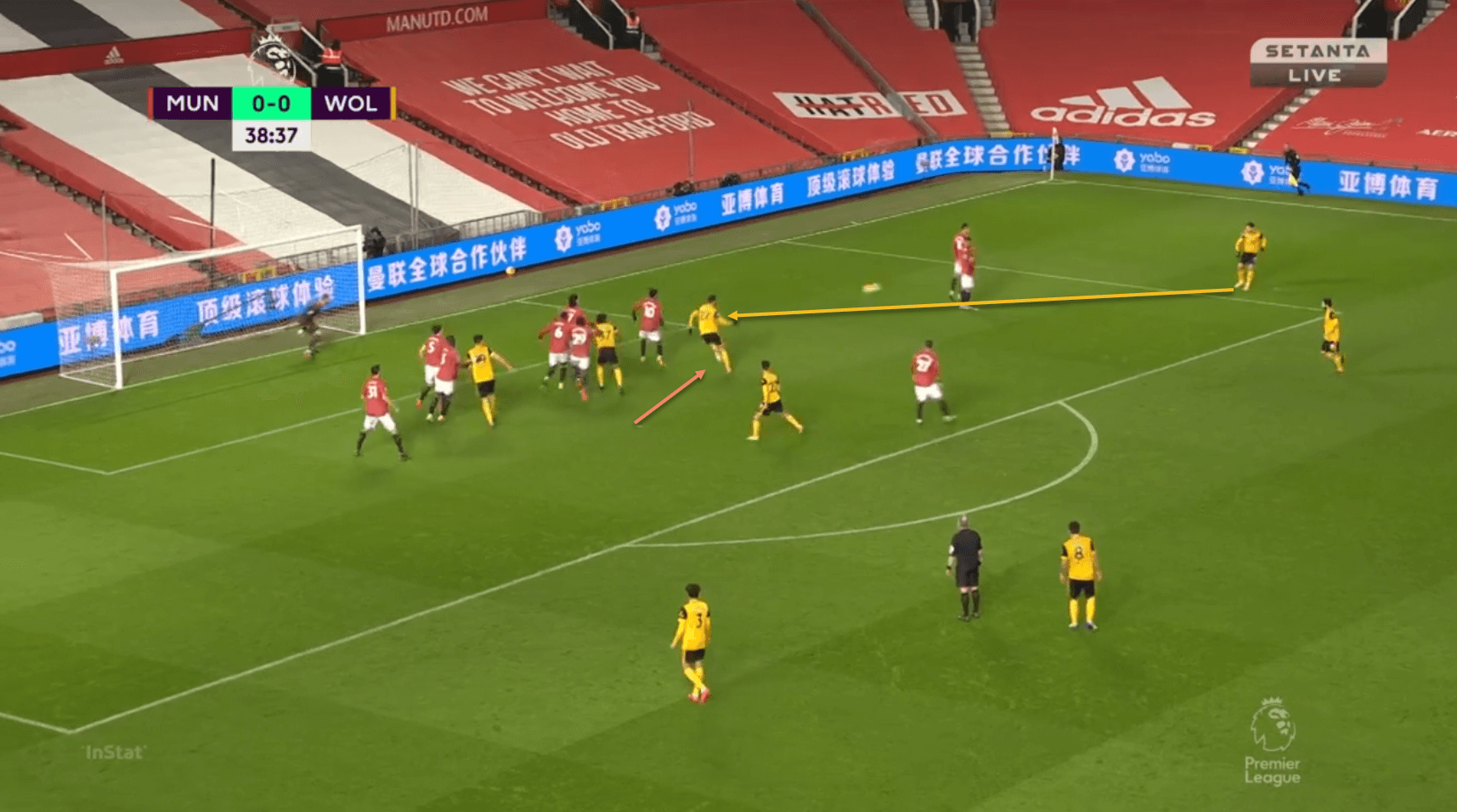
Neto delivers a flat, fast ball towards the near post, which Saïss meets with an improvised flick, forcing De Gea into a good save at his near post. Marcus Rashford is caught out by the run from behind him here, but Cavani should not have let the Moroccan international get away in the first place.
Solutions
United’s issues at defending set-pieces are a combination of system and individual mistakes. In terms of the system, the broad setup is fine, and Solskjaer may just need to tweak the roles of some of the players within that system. However, the bigger issue is undoubtedly the tendency of United’s players to produce moments of sloppinesss in the box. This is something that has been prevalent ever since Solskjaer was appointed, so he needs to find a way to fix it, whether by changing his training methods, or by chastising players more when they do drop such mistakes. United do work on set-pieces during training, given the relative consistency of their approach, so it is not an issue of the players not being familiar with their duties. This sloppiness needs to be erased, and quickly – United have already suffered in the Champions League and Carabao Cup due to this, and their league ambitions cannot be tainted in a similar manner.




Comments